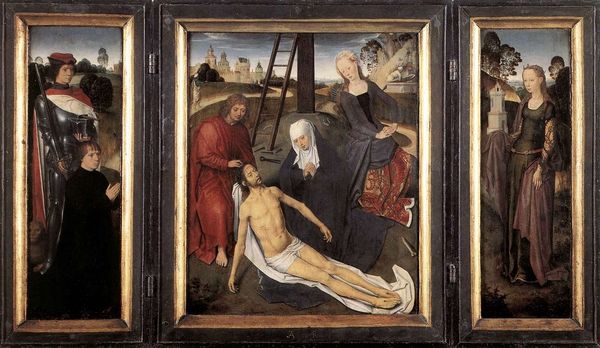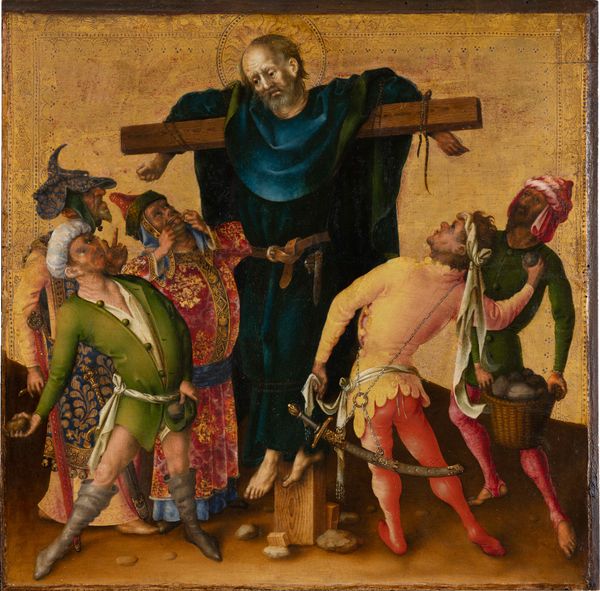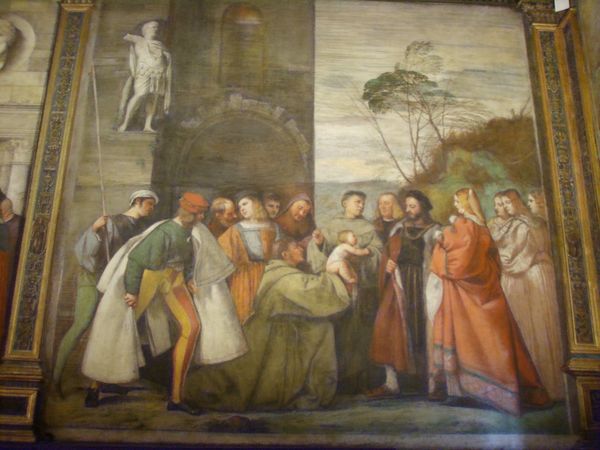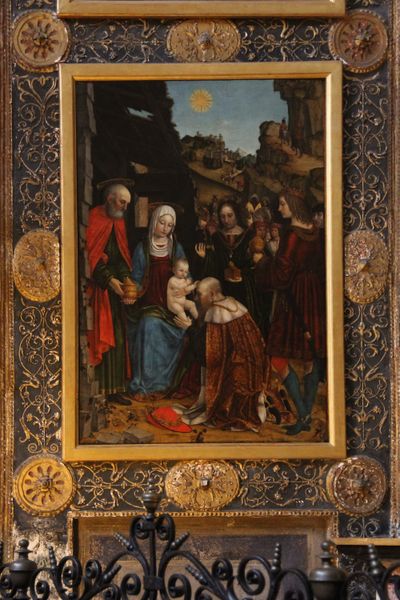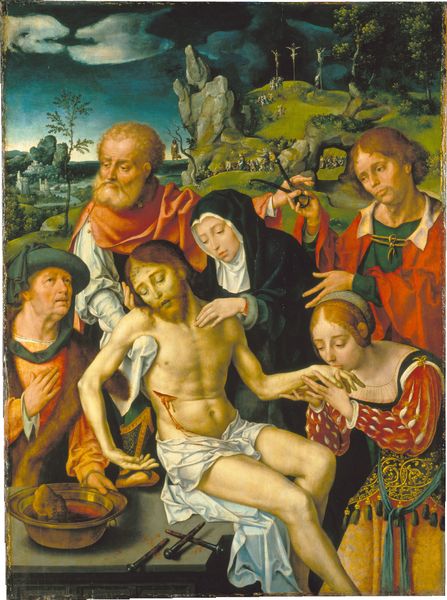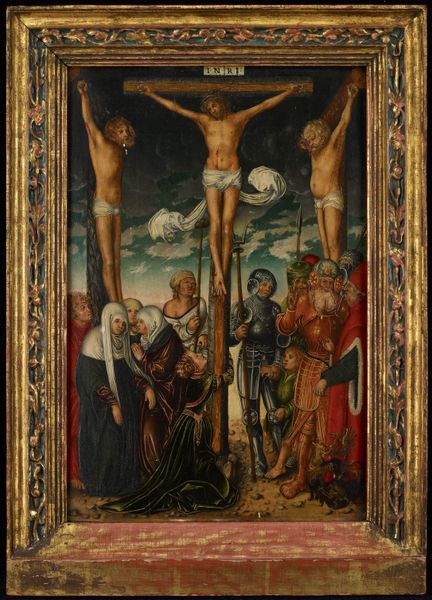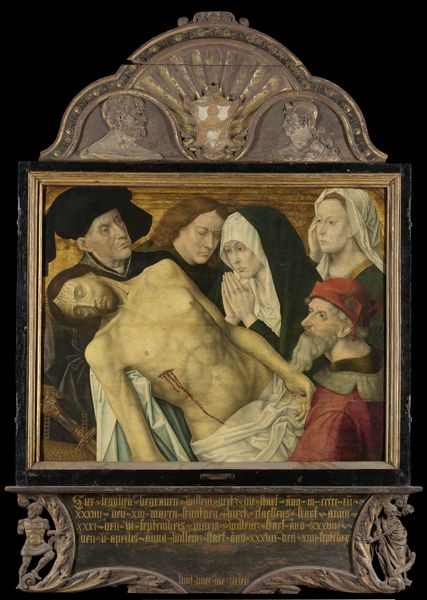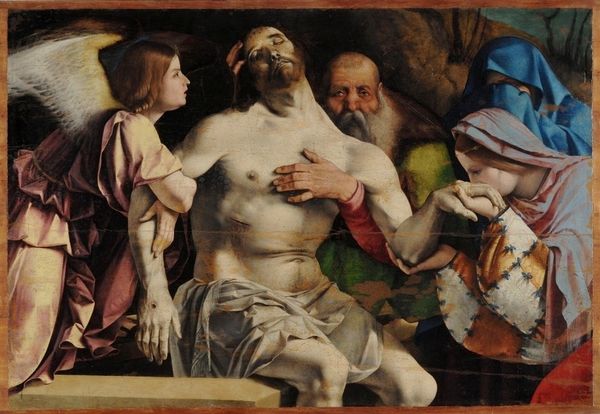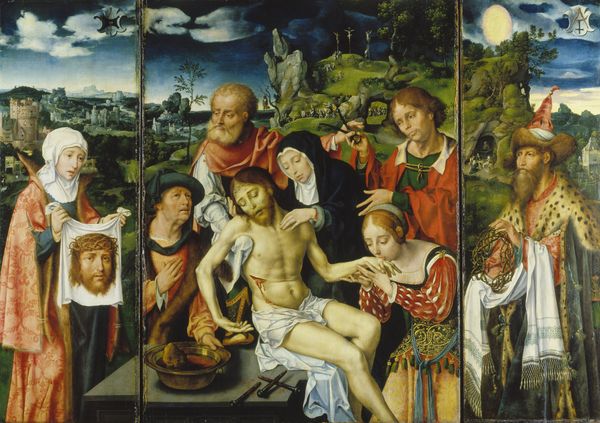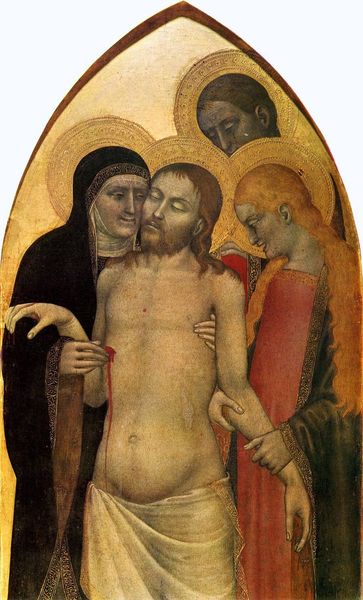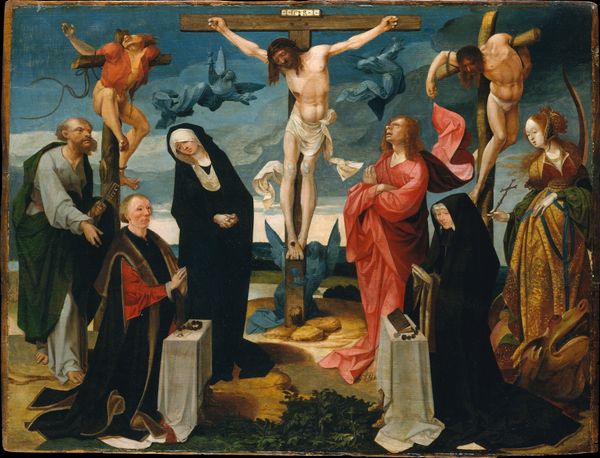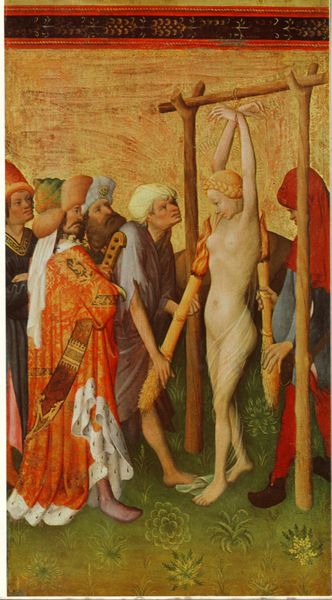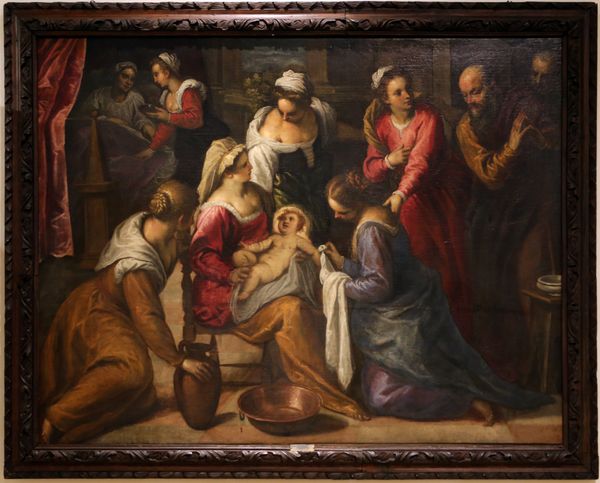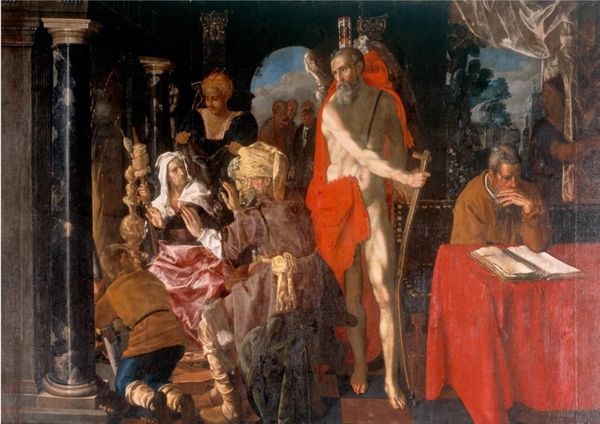
painting, oil-paint
#
narrative-art
#
painting
#
oil-paint
#
figuration
#
oil painting
#
history-painting
#
italian-renaissance
Copyright: Public domain
Curator: This is Ambrogio Bergognone’s “Elemosina Di San Benedetto,” created around 1490. It's an oil painting that captures a specific moment of generosity. Editor: Immediately striking. The somber tones amplify the beggar’s visible suffering, emphasizing the gravity of poverty even within this religious context. The architectural backdrop frames the interaction, giving it a stage-like presence. Curator: Precisely. Bergognone situates this scene within the evolving social landscape of the Italian Renaissance, where charitable acts by religious figures like St. Benedict were not merely personal but crucial for public order. The presence of Benedict, identifiable by his halo, lending alms to a poor man is part of Benedictine visual culture that reinforced the Order’s reputation. Editor: Absolutely. Look how the painter juxtaposes the abject physicality of the beggar against the calm, composed figures of the monks. Their charitable action almost feels performative when framed as public service rather than simply an act of human compassion. It provokes questions: Who benefits more from this exchange? What hierarchies does it sustain? Curator: That friction is essential, I think. Bergognone's choices—the detailed rendering of the pauper's worn clothes and the dignified posture of Benedict—reflects a keen awareness of the socio-economic disparities within the Republic of Florence. The patronage of such a piece by wealthy merchant families underscores art’s role in navigating their public images within a society grappling with growing inequalities. Editor: Right. The symbolism of wealth and piety intertwine, solidifying certain power structures under the guise of divine virtue. It serves as a historical reflection, prompting us to consider the complex layers of morality, politics, and representation in how we address inequality today. It subtly implies that personal almsgiving is not just virtuous but absolutely critical in a world marked by significant differences in the material quality of life. Curator: This makes Bergognone's rendering quite profound for its time. What we perceive as simplicity carries dense social commentary. Editor: Indeed. These historical artifacts continue to echo in today’s debates surrounding social justice and economic disparity. Thanks for unveiling it for us.
Comments
No comments
Be the first to comment and join the conversation on the ultimate creative platform.
